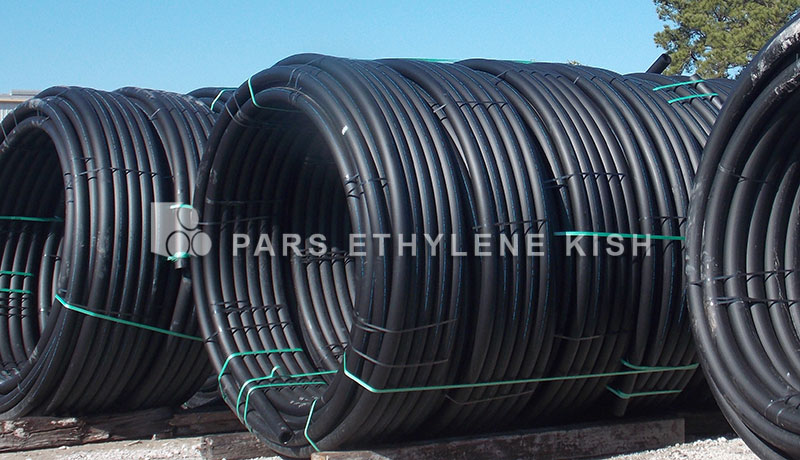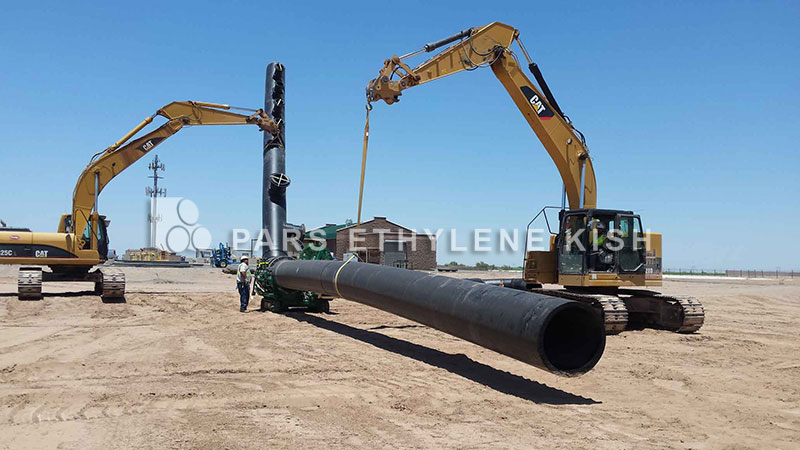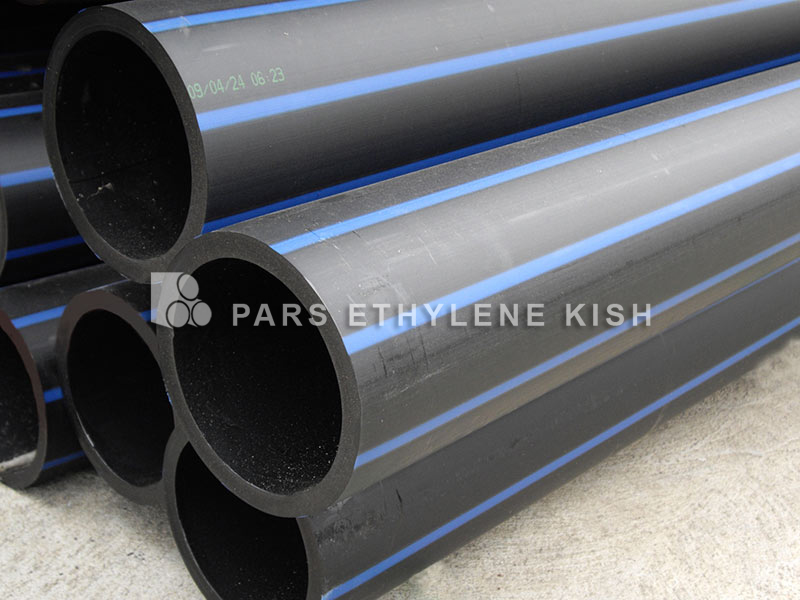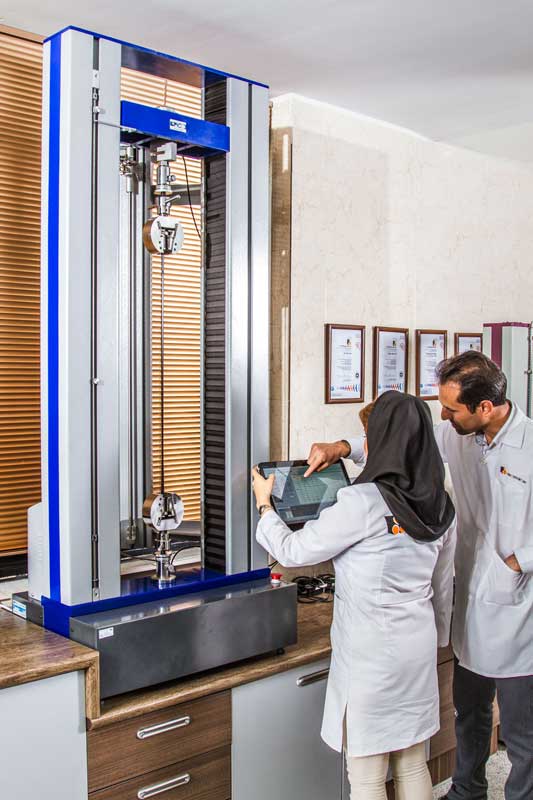
Standards for HDPE Pipe
Recommended standards for polyethylene pipe
Polyethylene Pipes have different standards for different applications. We list some of the most reputable ones for you, which, of course, did not include the German standard DIN because of its detailed description and details on the site, the standard polyethylene section.
It should be noted that the standard's quality which are collected in the following list aren`t good enough for printing , To get a better quality version of the standard, you can contact us ( Send message or send an email )
PE Pipe Design and Installation - AWWA MANUAL M55 - First Edition : A fundamental understanding of material characteristics is an inherent part of the design process for any piping system. With such an understanding, the piping designer can use the properties of the material to design for optimum performance. This chapter provides basic information that should assist the reader in understanding how polyethylene’s (PE’s) material characteristics influence its engineering behavior. PE plastics form flexible but tough products and possess excellent resistance to many chemicals.
Polyethylene (PE) Pressure Pipe and Fittings, 4 In. ( 100 mm ) Through 63 In. (1,600 mm), for Water Distribution and Transmission - 2017 : This standard describes polyethylene ( PE ) pressure pipe made from materials conforming to standard PE code designations PE 2406, PE 3406 and PE 3408.
Thermoplastics pipes for fluids under pressure - Mating dimensions of flange adapters and loose backing flanges - 1997 : This International Standard specifies the mating dimensions of flange adaptors of thermoplastic materials and the corresponding dimensions of loose backing flanges to be used with thermoplastic pipes under pressure. It applies to flange adaptors and loose backing flanges for use with pipes with nominal outside diameters dn from 16 mm to 1 200 mm and nominal pressures up to 16 bar’) (PN 16).Tables 2 and 3 specify dimensions for socket fusion systems of polyethylene (PE) and polypropylene (PP) and solvent-cemented systems of unplasticized poly(vinyl chloride) (PVC-U), chlorinated poly(vinyl chloride) (PVC-C) and acrylonitrile/butadiene/styrene (ABS). Tables 3 to 5 specify dimensions for butt fusion systems of polyethylene (PE) and polypropylene (PP).
Polyethylene (PE) pipes and fittings - Determination of the tensile strength and failure mode of test pieces from a butt-fused joint - 2001 : This International Standard describes a test method for determination of the tensile strength and tensile failure mode of butt-fused polyethylene (PE) pipe assemblies.The method is applicable to butt-fused joints between PE pipes with a nominal outside diameter of not less than.The method may be used, together with other test methods, to evaluate the quality of the butt-fused joints.
Specification for Polyethylene Line Pipe (PE) - 2008 : The purpose of this specification is to provide standards for polyethylene (PE) line pipe suitable for use in conveying oil, gas and non-potable water in underground, above ground and reliner applications for the oil and gas producing industries. The standard does not propose to address all of the safety concerns associated with the design, installation or use of products suggested herein.
Standard for the Installation of Private Fire Service Mains and Their Appurtenances - 2016 : This standard shall cover the minimum requirements - for the installation of private fire service mains and their appurtenances, which include supplying the following: (1) Automatic sprinkler systems (2) Open sprinkler systems (3) Water spray fixed systems (4) Foam systems (5) Private hydrants (6) Monitor nozzles or standpipe systems with reference to water supplies (7) Hose houses
Polyethylene (PE) - Pipes PE 80, PE 100 - Dimensions : 2011 - This standard applies for pipes made of polyethylene (PE), PE 80 and PE 100, and melt flow indices from nominal 0,2 g/10 min up to 1,4 g/10 min (DIN EN ISO 1872-1, condition T), which meet the requirements according to DIN 8075.
Thermoplastics pipes for the conveyance of fluids - Resistance to internal pressure - Test method - ISO/TC 138/SC 5 General properties of pipes, fittings and valves of plastic materials and their accessories - Test methods and basic specifications
Polyethylene (PE) pressure pipes and fittings, metric series - Dimensions of flanges - Specifies the principal dimensions of loose backing flanges for butt or socket fusion welded flange adaptors and clamping flanges. It applies to flanges for pipe sizes from 16 to 315 mm outside diameter and for nominal pressure up to 1 MPa - ISO/TC 138/SC 2 Plastics pipes and fittings for water supplies
Thermoplastics pipes - Resistance to liquid chemicals - Classification - Part 1: Immersion test method - This standard was last reviewed and confirmed in 2013. Therefore this version remains current. ISO/TC 138/SC 3 Plastics pipes and fittings for industrial
Buried polyethylene (PE) pipes for the supply of gaseous fuels - Metric series - Specifications -ISO/TC 138/SC 4 Plastics pipes and fittings for the supply of gaseous fuels
Plastics piping and ducting systems - Determination of the long-term hydrostatic strength of thermoplastics materials in pipe form by extrapolation - This standard was last reviewed and confirmed in 2018. Therefore this version remains current.ISO 9080:2012 specifies a method for predicting the long-term hydrostatic strength of thermoplastics materials by statistical extrapolation. The method is applicable to all types of thermoplastics pipe at applicable temperatures. It was developed on the basis of test data from pipe systems. ISO/TC 138/SC 5 General properties of pipes, fittings and valves of plastic materials and their accessories -- Test methods and basic specifications
PE/metal and PP/metal adaptor fittings for pipes for fluids under pressure - Design lengths and size of threads - Metric series - This standard was last reviewed and confirmed in 2017. Therefore this version remains current.Specifies the design lengths and size of threads for polyethylene/metal adaptor fittings and polypropylene/metal adaptor fittings for pipes under pressure. It also specifies the dimensions at the socket and spigot ends of the fitting.
Thermoplastics pipes for fluids under pressure - Mating dimensions of flange adapters and loose backing flanges -his standard was last reviewed and confirmed in 2014. Therefore this version remains current. Gives the mating dimensions of flange adaptors of thermoplastic materials and the coresponding dimensions of loose backing flanges to be used for thermoplastic pipes under pressure.
Thermoplastics materials for pipes and fittings for pressure applications - Classification and designation - Overall service (design) coefficient - Establishes the classification of thermoplastics materials in pipe form and specifies the material designation. Also gives a method for calculating the design stress. Applies to materials intended for pipes and/or fittings for pressure applications. This standard has been revised by ISO 12162:2009
Plastics pipes and fittings - Equipment for fusion jointing polyethylene systems - Part 1 : Butt fusion - This standard has been revised by ISO 12176-1:2017
Plastics pipes and fittings - Equipment for fusion jointing polyethylene systems - Part 2 : Electrofusion- ISO 12176-2:2008 specifies performance requirements for electrofusion control units for use with polyethylene (PE) electrofusion fittings for the supply of gaseous fuels or for the conveyance of water for human consumption, including raw water prior to treatment and for the conveyance of water for general purpose or other fluids.ISO 12176-2:2008 is applicable to control units with current or voltage control for fitting systems based on standard resistance wire heating technology.This standard was last reviewed and confirmed in 2017. Therefore this version remains current.
Plastics pipes and fittings - Equipment for fusion jointing polyethylene systems - Part 3 : Operator's badge
Plastics pipes and fittings - Equipment for fusion jointing polyethylene systems - Part 4 : Traceability coding - ISO 12176-4:2003 specifies an encoding system for data on components, assembly methods and jointing operations for polyethylene (PE) piping systems for gas supply, for use in a traceability system.This part of ISO 12176 is applicable to PE pipes, fittings and valves conforming to ISO standards for gas supply piping systems and also to the assembly operation utilizing methods such as fusion using a heating tool (butt, socket and saddle fusion), electrofusion (socket and saddle fusion), induction fusion and mechanical jointing.This standard was last reviewed and confirmed in 2015. Therefore this version remains current.
Thermoplastics pipes for the conveyance of fluids - Determination of resistance to rapid crack propagation (RCP) - Small-scale steady-state test (S4 test) - ISO 13477:2008 specifies a small-scale (S4) test method for determining the arrest or propagation of a crack initiated in a thermoplastics pipe at a specified temperature and internal pressure.ISO 13477:2008 is applicable to the assessment of the performance of thermoplastics pipes intended for the supply of gases or liquids. In the latter case, air can also be present in the pipe.This standard was last reviewed and confirmed in 2018. Therefore this version remains current.
Thermoplastics pipes for the conveyance of fluids - Determination of resistance to rapid crack propagation (RCP) - Full-scale test (FST) - This standard has been revised by ISO 13478:2007
Polyolefin pipes for the conveyance of fluids - Determination of resistance to crack propagation - Test method for slow crack growth on notched pipes - ISO 13479:2009 specifies a test method for determining the resistance to slow crack growth of polyolefin pipes, expressed in terms of time to failure in a hydrostatic pressure test on a pipe with machined longitudinal notches in the outside surface. The test is applicable to pipes of wall thickness greater than 5 mm. This standard was last reviewed and confirmed in 2015. Therefore this version remains current.
Polyethylene pipes - Resistance to slow crack growth - Cone test method - ISO/TC 138/SC 5 General properties of pipes, fittings and valves of plastic materials and their accessories -- Test methods and basic specifications - This standard was last reviewed and confirmed in 2015. Therefore this version remains current.
Plastics pipes and fittings - Pressure reduction factors for polyethylene pipeline systems for use at temperatures above 20 degrees C - Gives a method for the derivation of reduction factors to be used to obtain the maximum allowable operating pressure for elevated-temperature operation of polyethylene (PE) pipeline systems. Applicable to fluids which do not adversely affect the long-term properties of the polyethylen material at temperatures between 20 °C and 40 °C. This standard has been revised by ISO 13761:2017
Plastics pipes and fittings - Mechanical-joint compression fittings for use with polyethylene pressure pipes in water supply systems - This standard has been revised by ISO 17885:2015
Plastics pipes and fittings - Combined chemical-resistance classification table - The materials covered by the classification are: low-density polyethylene; high-density polyethylene; polypropylene; Poly(vinyl chloride), unplasticized; Poly(vinyl chloride), chlorinated; polybutene; Acrylonitrile/butadiene/styrene; Poly(vinylidene fluoride); cross-linked polyethylene. Three classes are distinguished: satisfactory resistance, limited resistance, resistance not satisfactory. Corrosion resistance is given to 427 chemicals of different concentration at different temperatures. This standard was last reviewed and confirmed in 2009. Therefore this version remains current.
Fusion compatibility of polyethylene (PE) pipes and fittings - ISO/TC 138/SC 5 General properties of pipes, fittings and valves of plastic materials and their accessories -- Test methods and basic
IS0/TS 10839:2000
Polyethylene pipes and fittings for the supply of gaseous fuels - Code of practice for design, handling and installation - This standard was last reviewed and confirmed in 2014
Plastics piping systems for the supply of gaseous fuels - Polyethylene (PE)- This part of EN 1555 specifies the general aspects of polyethylene (PE) piping systems in the field of the supply of gaseous fuels. It also specifies the test parameters for the test methods referred to in this standard.
Plastics piping systems for the supply of gaseous fuels - Polyethylene (PE) - Part 2 : Pipes - This part of EN 1555 specifies the characteristics of pipes made from polyethylene (PE) for piping systems in the field of the supply of gaseous fuels. It also specifies the test parameters for the test methods referred to in this standard.
Draft BS EN 1555-3 Plastics piping systems for the supply of gaseous fuels - Polyethylene - (PE) - Part 3 : Fittings - This part of EN 1555 specifies the characteristics of fusion fittings made from polyethylene (PE) as well as of mechanical fittings for piping systems in the field of the supply of gaseous fuels. It also specifies the test parameters for the test methods referred to in this standard.
Plastics piping systems for the supply of gaseous fuels - Polyethylene (PE) - Part 4 : Valves - This part of EN 1555 specifies the characteristics of valves made from polyethylene (PE) for piping systems in the field of the supply of gaseous fuels.
Draft BS EN 1555-5 Plastics piping systems for the supply of gaseous fuels - Polyethylene (PE) - Part 5 : Fitness for purpose of the system - This part of EN 1555 specifies requirements of fitness for purpose of the polyethylene (PE) piping system in the field of the supply of gaseous fuels. It specifies the definitions of electrofusion, butt fusion and mechanical joints.
DIN Standards
ISIRI Certificate
Reference standards of PE, PVC and polymer



